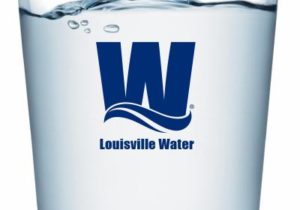 Louisville Water is in the business of public health and our drinking water is safe, high-quality and meets all regulatory standards. Today, the EPA issued new health advisory levels to manage the risk for a group of man-made chemicals in drinking water called PFAS (Per- and polyfluoroalkyl substances).
Louisville Water is in the business of public health and our drinking water is safe, high-quality and meets all regulatory standards. Today, the EPA issued new health advisory levels to manage the risk for a group of man-made chemicals in drinking water called PFAS (Per- and polyfluoroalkyl substances).
We want to explain EPA’s action and describe Louisville Water’s ongoing research.
First, what are PFAS compounds?
Since the 1940s, PFAS compounds have been widely used in the manufacturing of carpets, clothing, fabrics for furniture, paper packaging for food and other materials. They are also used for firefighting and in industrial processes. The EPA says most people are exposed to these chemicals through consumer products. Drinking water can be an additional source of exposure in communities where these chemicals have entered the water supplies.
EPA regulates the safe levels for hundreds of compounds in drinking water. Currently, there is no federal regulation for PFAS. Many water utilities, including our scientists at Louisville Water are conducting research to determine the levels of PFAS in our water and how well various treatment options can reduce levels.
PFAS are a large family of compounds, up to 5,000 chemicals. EPA is focused on a small number of these compounds that may have health effects at very low concentrations, two of which are Perfluorooctanoic acid (PFOA) and Perfluorooctane Sulfonate (PFOS).
The EPA says most uses of PFOA and PFOS were voluntarily phased out by U.S. manufacturers in the mid-2000s. There are a limited number of ongoing uses, and these chemicals remain in the environment due to their persistence and the inability to degrade.
What is the EPA’s Health Advisory Level and what does it mean?
It can be a lengthy process to set drinking water regulations. With science, there’s no such thing as zero, so research is important to determine an acceptable risk level for public health. A health advisory level is commonly a first step in EPA developing a regulation.
Today the EPA set new Interim Health Advisory Levels for PFOA at 0.004 parts per trillion and 0.02 parts per trillion for PFOS. These are microscopic levels, trace amounts. For perspective, 1 part per trillion is equal to 1 drop in 500,000 barrels of water. These new health advisories are also below current reliable detection abilities of scientific equipment (Scientists can currently detect PFAS compounds at 2 parts per trillion.)
Health advisories are not enforceable like regulations. Instead, the advisories are interim guidance before EPA develops a formal regulation. The health advisory level is the minimum concentration of a compound which may present health risks to an individual over a lifetime of exposure. Because there is uncertainty of the health effects associated with long-term exposure to compounds, EPA sets lower health advisories. Sometimes, the advisory is lower than current analytical methods can detect.
EPA first issued a health advisory level for PFOA and PFOS in 2016 at 70 parts per trillion. Because of further research and as EPA determines its regulatory approach, it has created a lower health advisory.
What are the levels in Louisville’s drinking water?
Louisville Water samples our source waters and the treated drinking water leaving the treatment plants. Louisville Water does monthly monitoring for PFAS. Our most current monitoring results for PFOA and PFOS show the following averages:
Crescent Hill Water Treatment Plant
| PFAS Compound | Louisville Water Monitoring Averages | EPA Health Advisory Level |
| PFOA | 3.7 parts per trillion | .004 parts per trillion |
| PFOS | Non-detectable | .02 parts per trillion |
B.E. Payne Water Treatment Plant
| PFAS Compound | Louisville Water Monitoring Averages | EPA Health Advisory Level |
| PFOA | 4.7 parts per trillion | .004 parts per trillion |
| PFOS | Non-detectable | .02 parts per trillion |
The other PFAS compounds for which EPA issued health advisory levels include hexafluoropropylene oxide dimer acid (HFPO-DA), otherwise known as “GenX,” and Perfluorobutane sulfonic acid (PFBS). Our monitoring results indicate levels that are well below the health advisory levels:
| PFAS Compound | Louisville Water Monitoring Averages | EPA Health Advisory Level |
| GenX | Non-detectable at B.E. Payne Plant and 3.4 parts per trillion at Crescent Hill Plant | 10 parts per trillion |
| PFBS | Non-detectable with current analytical methods | 2,000 parts per trillion |
What is Louisville Water doing about PFAS?
We recognize the average level of PFOA in our monitoring is above the EPA’s new health advisory levels. That’s why research is a priority. Our scientists need to learn more, specifically:
- Determining the levels of PFAS in our water with additional monitoring and identifying any patterns
- Understanding established and emerging treatment options
- Developing practical and feasible strategies to reduce levels of PFAS as EPA develops and finalizes its future drinking water standards.
The lower the level, the lower the risk and as always, public health and the quality of your drinking water is our top priority.
Ask a question or reach out with a concern. We are always available to talk about how we produce and deliver your drinking water and the steps we take to maintain quality.

